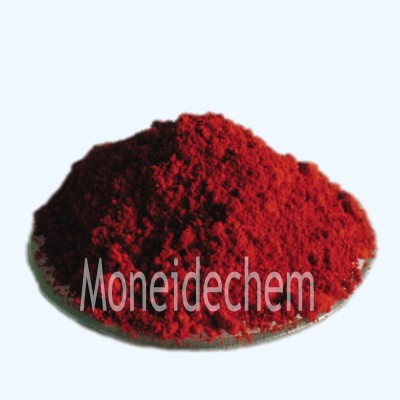Welcome to Tangshan Moneide Trading Co., Ltd.
Bahan Kimia Moneida
Tel: 86-315-8309571
WhatsApp/WeChat/Mobile: 0086-15633399667
Skype: janet-jujur
Surat: sales@moneidechem.com
Alamat: 2-7-523 Jidong Building Materials Tangshan, Hebei 064000 Tiongkok
|
Nama Kimia |
Sudan Ⅱ |
|
Nomor CAS. |
3118-97-6 |
|
Rumus molekul |
C18H16N2O |
|
Nomor EINECS |
221-490-4 |
|
Berat molekul |
276.24 |
|
Struktur Molekul |
|
|
Rincian |
Appearance: Brown red powder Melting range: 159-166℃ Biological stain: Passes test Solubility in Benzene: Passes test Solubility: insolve in water, alkali and ebb acid, solve in aether (orange) naphtha, oil of vitriol, fat and oil, decline solve in ethanol. Sulfated ash: 0.7% max. Loss on drying: 1.0% max. Packing: 25kg/ fibre drum |
|
Aplikasi Utama |
Used as biological dyeing agents. |
Sudan II is a synthetic azo dye classified as a lipophilic (fat-soluble) compound. It appears as a red-orange powder and is part of the Sudan dye family, which includes Sudan I, III, and IV. Primarily used as a coloring agent for non-polar substances like oils, waxes, and plastics, Sudan II is also employed in biological staining to identify lipids in tissues. However, its use in food products is banned in many countries due to potential carcinogenicity.
Sudan II Application
Sudan II is mainly utilized in industrial applications, such as dyeing solvents, fuels, and lubricants. In laboratories, it serves as a histological stain for detecting fats and lipids in microscopy. Despite its effectiveness, its most controversial use was historically in food adulteration (e.g., chili powder), leading to strict regulations. Additionally, it finds niche roles in printer inks and coatings. Due to toxicity concerns, modern applications focus on non-edible products, with safer alternatives preferred for food and cosmetics.
Sudan II Benefits
The primary advantage of Sudan II is its strong affinity for non-polar materials, making it ideal for staining lipids and dyeing hydrophobic substances. Its vibrant color and stability in organic solvents provide long-lasting results in industrial processes. Cost-effectiveness and ease of use also contribute to its persistence in controlled applications. However, its toxicity limits its use, and regulatory restrictions emphasize the need for proper handling. In research, it remains valuable for lipid studies under safety protocols.






























